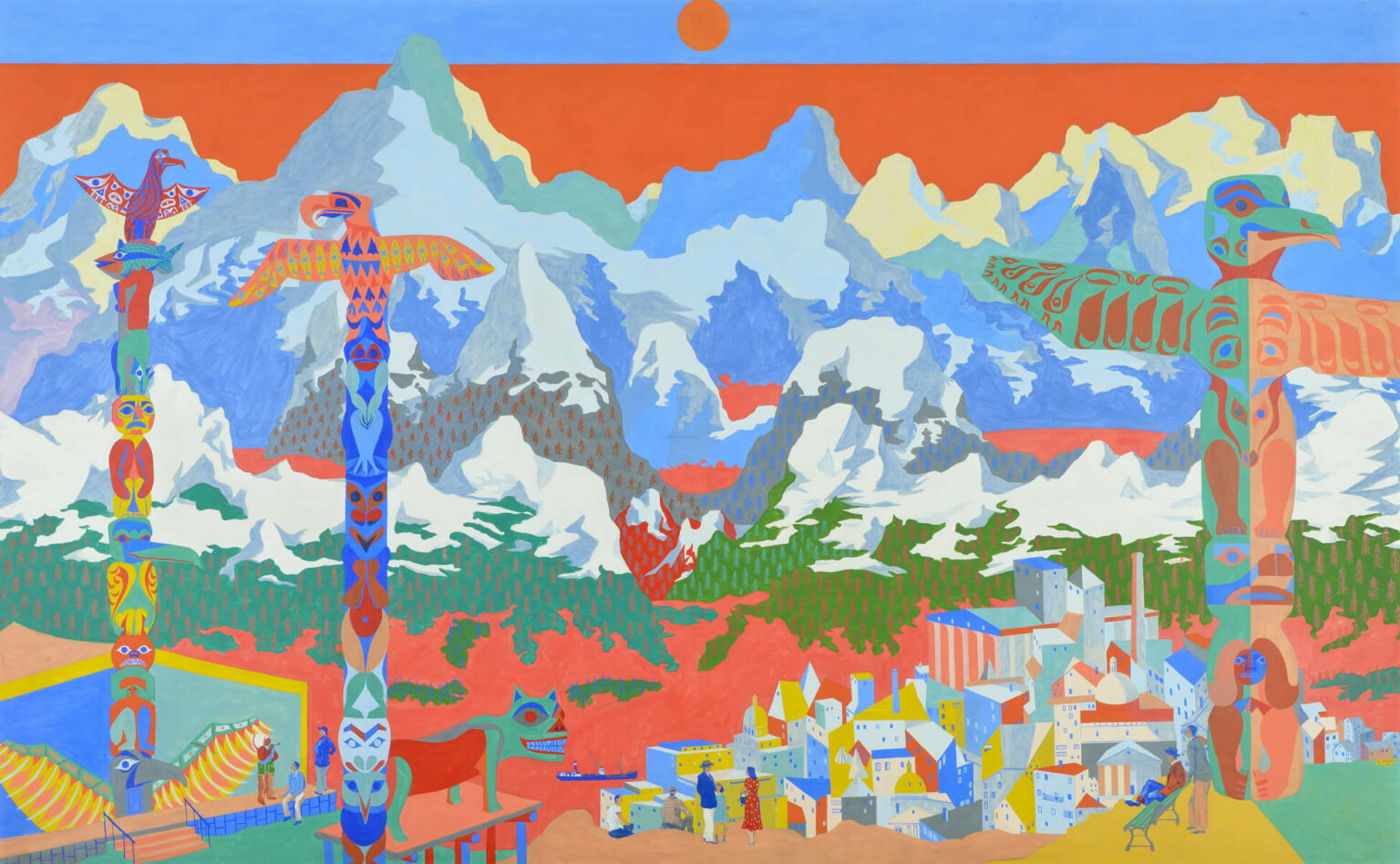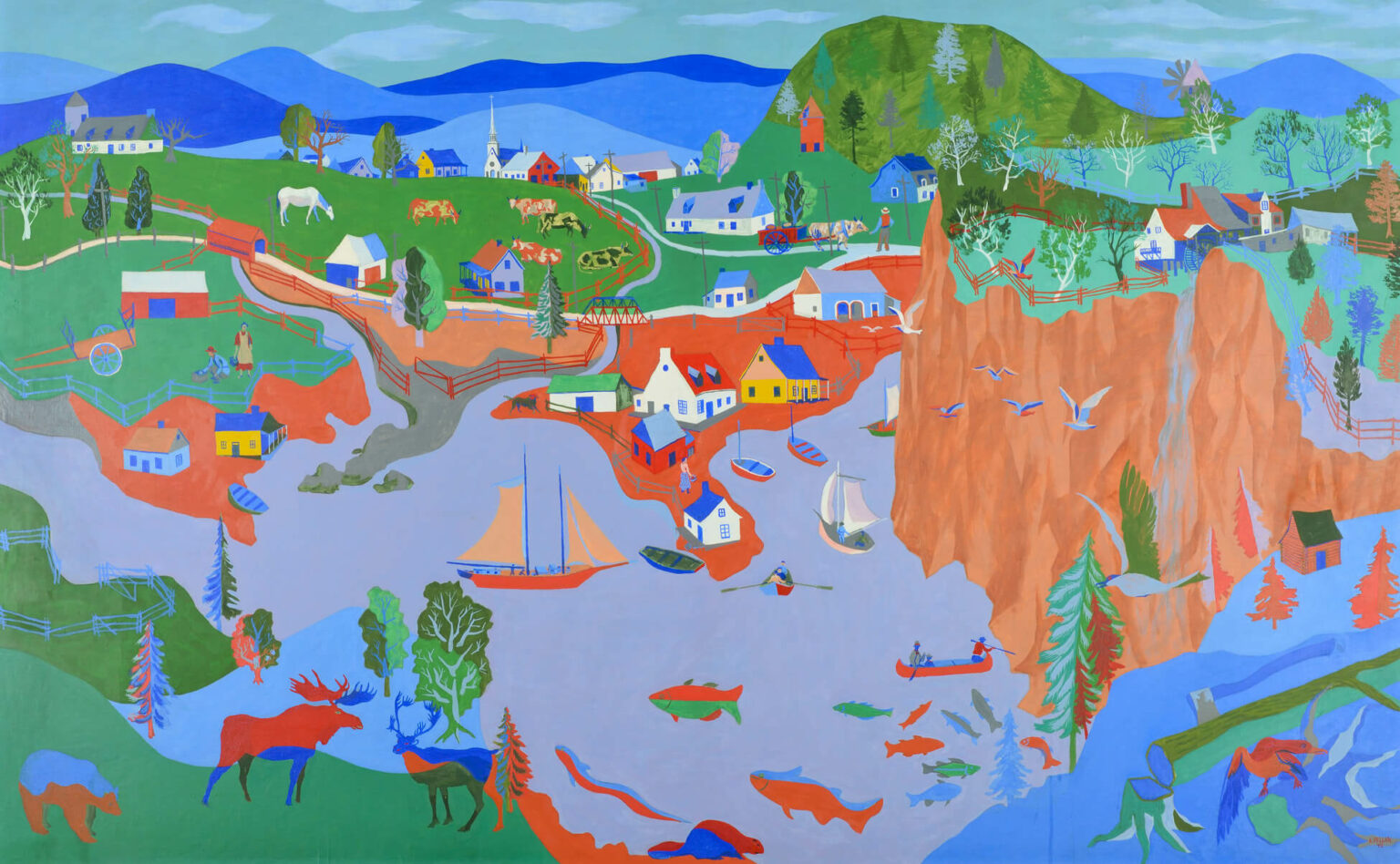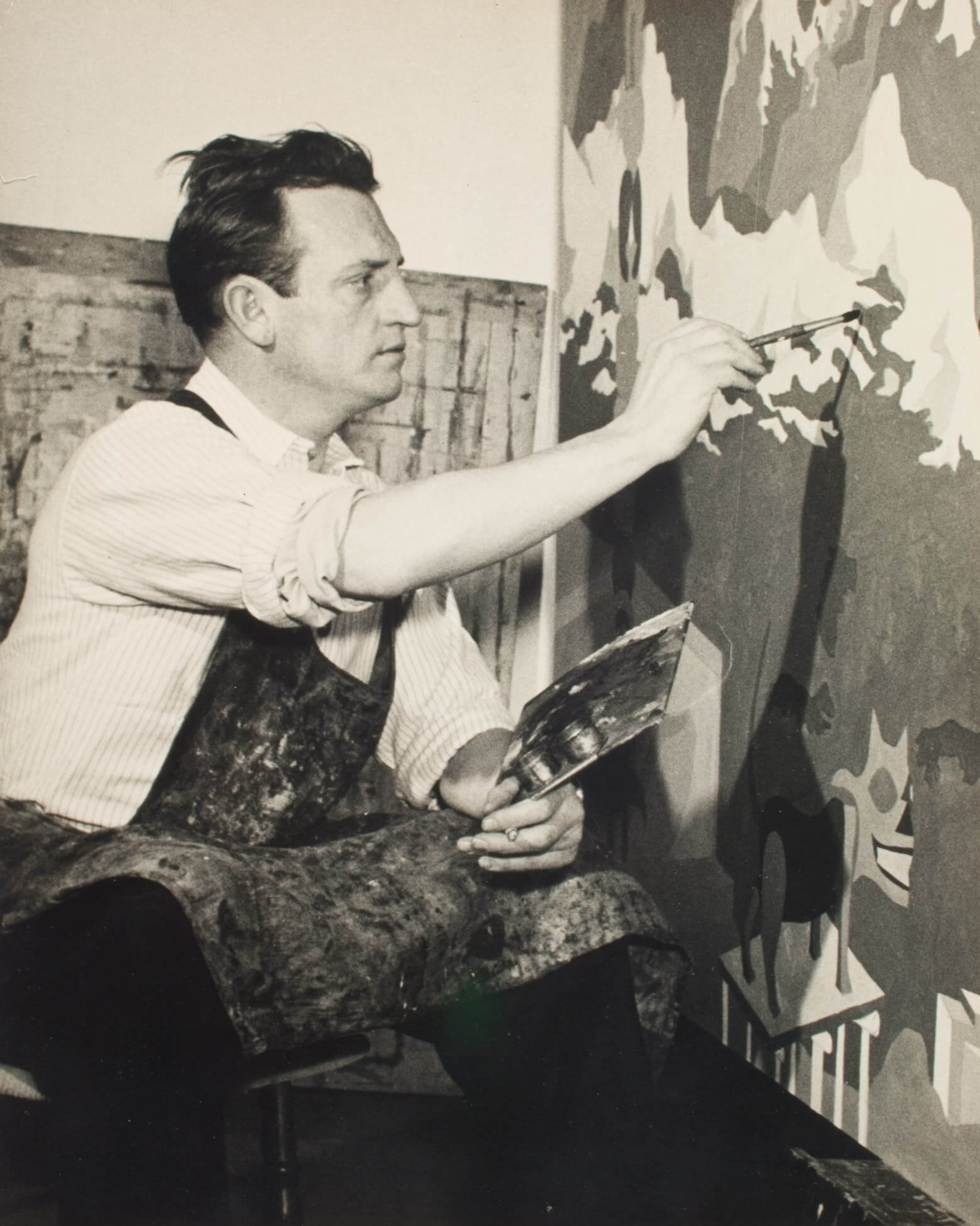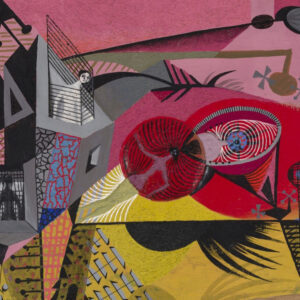Untitled (Canada West) and Untitled (Canada East) 1942–43

Alfred Pellan, Sans titre (Canada Ouest) (Untitled [Canada West]), 1942–43
Gouache on canvas on wood panel, 208.5 x 322 cm
Global Affairs Canada Visual Art Collection, Ottawa

Alfred Pellan, Sans titre (Canada Est) (Untitled [Canada East]), 1942–43
Gouache on canvas, on wood panel, 208.2 x 322.3 cm
Global Affairs Canada Visual Art Collection, Ottawa
In 1942, Jean Désy (1893–1960), the Canadian ambassador to Brazil, commissioned Alfred Pellan to create two works for the reception room of the first Canadian mission in Rio de Janeiro. The first of many public murals by the artist, these two compositions depict imaginary landscapes intended to represent the West Coast and East Coast of Canada. Sans titre (Canada Ouest) (Untitled [Canada West]) is formidable, with massive mountains in white, blue, and green that stand in stark contrast to the red-and-blue sky. An industrialized metropolis containing remnants of the neoclassical parliament building in Winnipeg is depicted in the lower-right corner. In Sans titre (Canada Est) (Untitled [Canada East]), the background is made up of blue-tinted hills, red-and-green fields cut by white-and-pink paths, and small blue-and-white houses. A great lake in mauve dominates a large portion of the painting, while tall, sharp-edged ochre cliffs draw the eye to the right. Rendered in fantastical hues, a bear, a deer, and a beaver—all animals associated with Canada—are placed in the foreground.

Because mural art engages with a given architectural space—and indeed, may even modify such a space on occasion—the genre is anchored in site specificity: artists must consider the structural context of the building in which a mural is to be placed. Whereas a traditional mural approach would involve painting directly onto the wall, Pellan created large-scale decorative panels that covered the surface. In doing so, he freed his murals from their architectural constraints and created a spatial opening via the imagined landscapes depicted on the canvases. As portals of sorts, they allowed the viewer to be transported to Canada. But neither Canada East nor Canada West represent any actual location; rather, they are a personal interpretation of certain characteristics of the nation. They are the result of “a spirit of someone that passionately loves the land he paints: its people, its animals and its heaven.” Tasked with creating art to be displayed in a building that represented Canada abroad, Pellan needed to conjure an image of the country through his murals; his animals, symbols, and landscapes had to be easily recognizable as “Canadian.”
For many years, this pair of paintings held pride of place above the reception desk in the Lester B. Pearson building in Ottawa, where Pellan’s murals were installed in 1973 when Queen Elizabeth inaugurated the headquarters of what was then known as the Ministry of Foreign Affairs. But in 2011, John Baird, who oversaw the department, swapped the whimsical landscapes for a photographic portrait of the Queen, taken in 2002. As a spokesperson for Baird noted at the time, the switch was part of a celebration of the monarch in the year leading up to her diamond jubilee and was timed to coincide with a visit from the Duke and Duchess of Cambridge. Four years later, in 2015, Canada East and Canada West were returned to their previous home on the wall of the newly renamed Global Affairs Canada—a move that implicitly signalled a renewed interest in emphasizing Canada’s distinctive identity as a nation in its own right, and not simply as a part of the British Commonwealth. Pellan’s unique vision of the country’s national mythos played a key role in communicating this notion.

 About the Author
About the Author
 More Online Art Books
More Online Art Books
 Acknowledgements
Acknowledgements